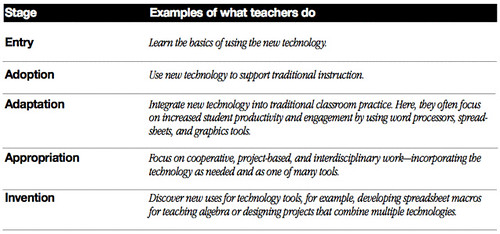Eric Langhorst has posted a superb review of the online assessment tool Quia.com as a new podcast on his blog, “Speaking of History.” I haven’t used Quia.com myself for several years, but hearing Eric describe it makes me wish that more teachers knew about it and had access to it or tools like it.
We hear a lot about “data driven decisionmaking,” but often that term is used by administrators rather than teachers. Of course many teachers are using the results of district benchmark assessments leading up to the statewide assessment instruments used to measure student learning in our high-stakes educational environment– but what Eric is talking about here is not district or state initiated. He uses Quia to provide both pre-assessment and summative assessment feedback for himself and students in a real-time way that is both authentic and extremely valuable.
One of the things I like to discuss in educational technology workshops (like the one on free digital curriculum I’ll give again tomorrow here in Durant, Oklahoma) is the difference between “accomodating” and “transformative” uses of technology. This came out of the Apple Classroom of Tomorrow Research, which still to date is the most comprehensive, longitudinal study of technology integration in the classroom that I’ve heard about. On page 16 of ACOT’s 10 Year Report (PDF) the stages of technology integration are described in the following table:
One of the big things I think we need to encourage teachers to do with technology is move from the initial, “accomodating” stages of technology integration to the more transformative, creative stages. Yes I know, in a high-stakes testing environment where curriculum pacing guides abound– this is a tall order. But I still think it is something that needs to be done.
In some ways, Eric is assessing students with Quia.com just like teachers have assessed them with tests for many years. However, the immediacy of the feedback he is receiving and the students are receiving is transformative. He also mentions something very interesting relating to handwriting, students typing essay answers, and fairness in grading. Eric observes that many teachers (himself included) may consciously or subconsciously grade an essay written in neater handwriting more generously, even if the content is not as good as a poorly handwritten answer. He points out that by having students keyboard their answers, this bias is avoided– along with the Quia feature which permits the student’s name to be hidden from the teacher at the time he/she is grading their essay answers online.
Quia is a great tool, and I appreciate Eric taking the time to share how he and the other 8th grade American history teacher at his school have been integrating it into their assessment practices for several years. Check out his podcast as well as his blog— Eric just got back from several days on the Microsoft campus for the “Microsoft Innovative Teachers Forum” and his blog post on the event is worth checking out. (More will be coming I’m sure, along with additional podcasts from the event.)
If you enjoyed this post and found it useful, subscribe to Wes’ free newsletter. Check out Wes’ video tutorial library, “Playing with Media.” Information about more ways to learn with Dr. Wesley Fryer are available on wesfryer.com/after.
On this day..
- YouTube Tips and Tricks (September 2020) – 2020
- An Invitation for You: Fall 2016 School Digital Citizenship Survey – 2016
- Seeking Funding for an Oklahoma School NCLB Left Behind – 2013
- Adding Audio to a WordPress Sound Blog – 2011
- Using Social Networking Tools to Increase Discussion in the Classroom by Karin Perry – 2010
- Did You Know 4.0 – The Mobile Revolution is Here – 2009
- Chinese Parental Expectations, Creativity, and Chinese Film Recommendations – 2009
- EverNote iPhone Voice Memos – 2008
- Proof a T-1 line is insufficient – 2008
- Content filtering in Communist China versus an Oklahoma school – 2007

